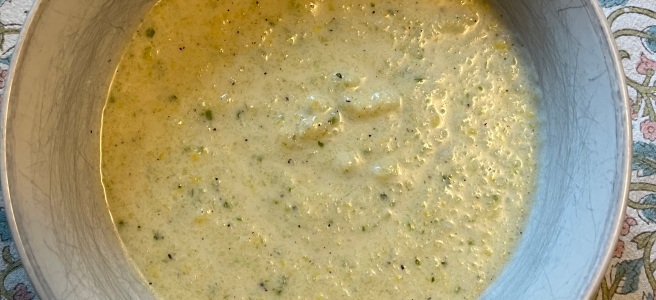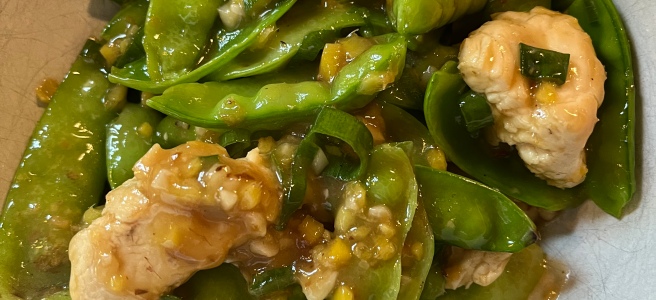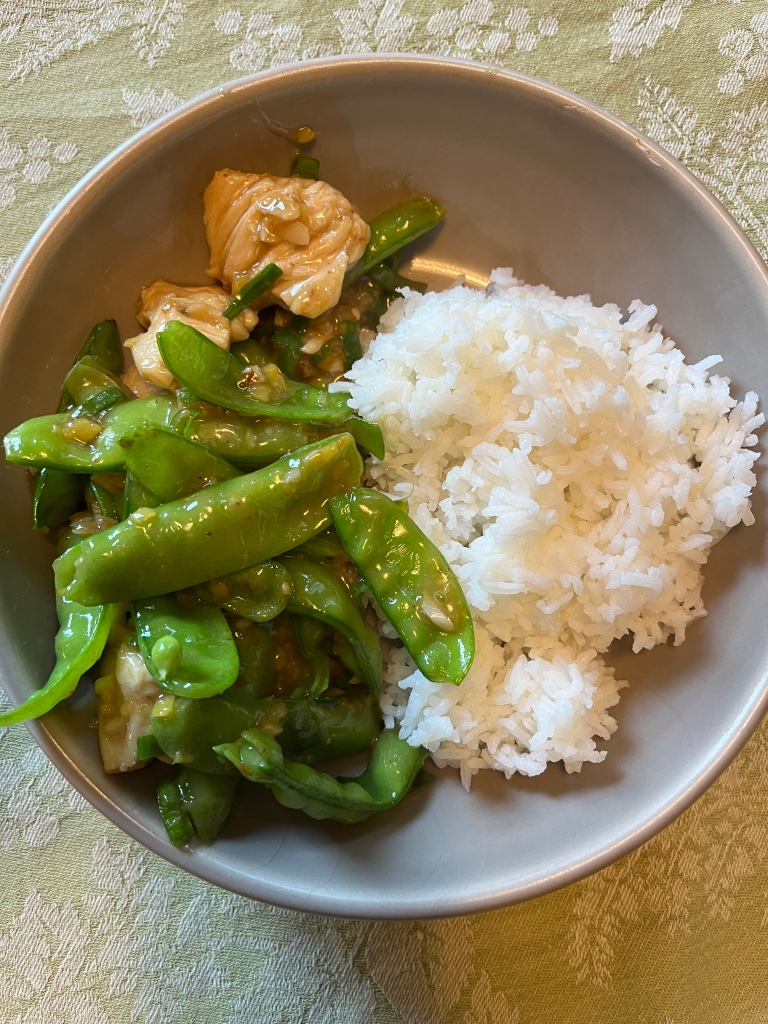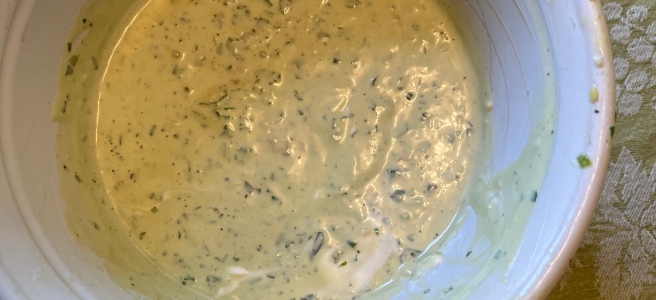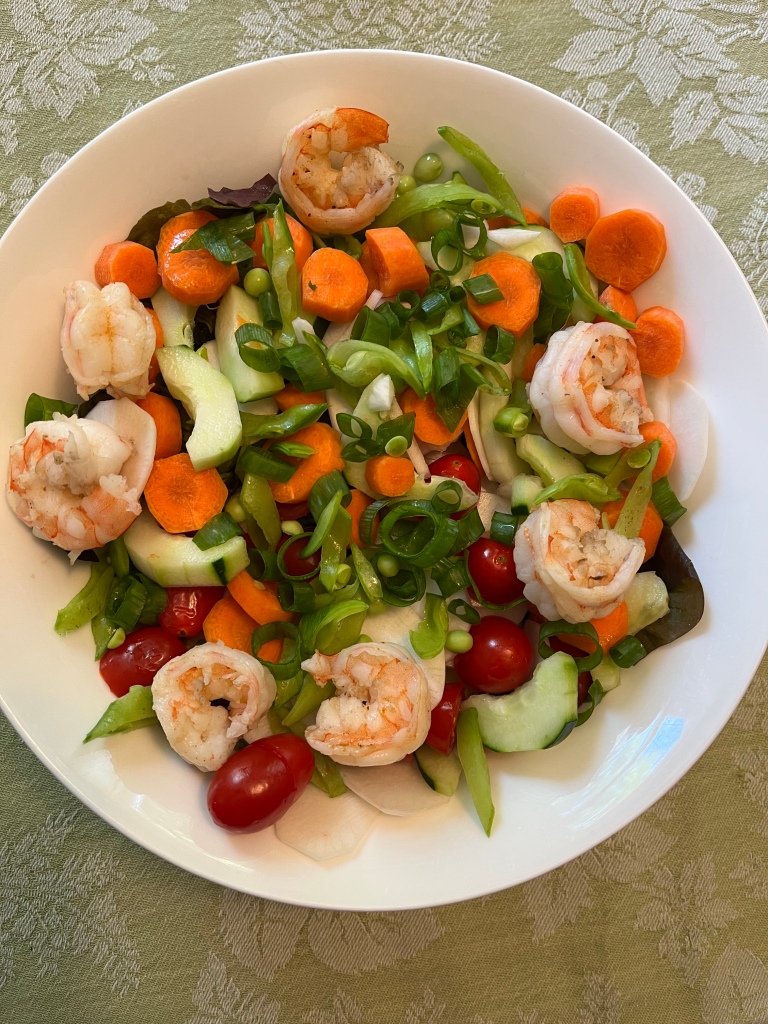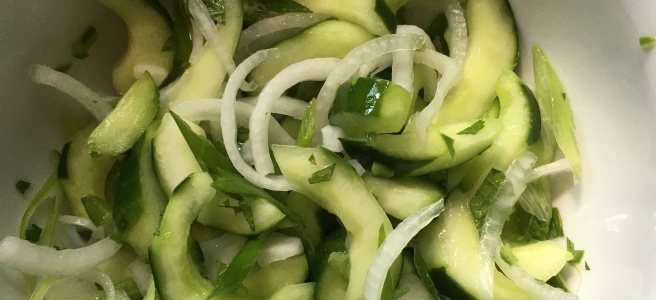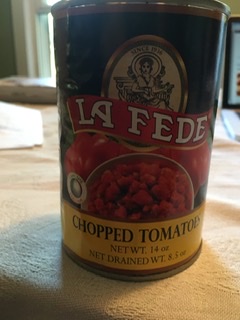Sauté or steam some zucchini and perhaps also some yellow squash and fresh onions if all in season in the glorious high summer month of July in the Hudson Valley. Then purée with steaming liquid or vegetable stock, add yogurt, some lemon and perhaps some sumac in the sauté, and some grated garlic in the soup to then chill.
Ingredients:
Fresh onion (optional), 1, sliced into half moons
Zucchini perhaps some yellow squash too, 1 #, soaked in water and then cut into half moons
Sumac, optional
Salt and pepper
Vegetable stock, 1/2 – 1 c
Yogurt, 1-1/2 c
Lemon juice, 1 T
Garlic clove, 1 small, grated
Directions:
- Sauté onions in olive oil in large sauté pan over medium high heat. Add sumac. Add sliced zukes when onions are cooked pretty much. Add S&P and sauté, then add vegetable stock, cover and steam until done.
- Purée zucchini with stock. Put in bowl and whisk in: yogurt, lemon juice and garlic.
- Chill.
- Strain soup, using spatula to press and scrape. This is optional, such as for company or you’re feeling fancy.
- Optional garnishments: mint, chiffonade cut; or thinly sliced zucchini, salted and strained for 15 minutes, rinsed then patted dry.
